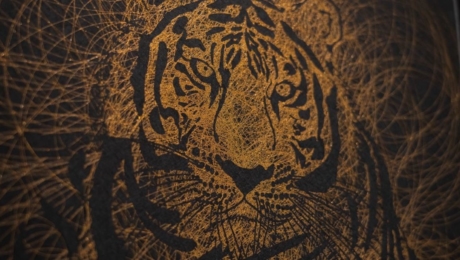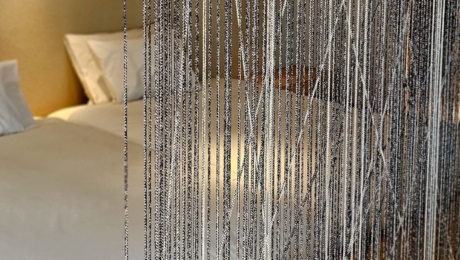
“I think our mission is to create the ‘current’ season.” How does Takahashi Kobo’s Edo-period style wood carvings fascinate this modern society we live in? By bringing us closer to the challenges of the future.
2021.02.26
LIFEDuring the Edo period, Ukiyo-e prints grew popular and were available to common folk as a source of information on fashion and trends of the period. Edo wood carvings, that can be said to be the creator of magazine culture. What is the role and value of Takahashi Kobo in current times?

Ukiyo-e prints are usually completed after 15 to 20 rounds of dyeing. The bright and exclusive colors on the print are very attractive.

One of the appeals of the exhibit is that the public can view the tools used by the artisan in his craft on open display.
Ukiyo-e should go on forever. How much new technology can be fused with our technology as we further improve our skills?
Edo wood carvings, colorful and delicate, are difficult to press by machine. They are the result of tradition and craftsmanship. We asked about Takahashi Kobo’s Edo wood carvings, that mesmerize people not only in Japan but around the world, and about her new undertakings. “Regarding current endeavors, we are working on a project to finish a drawing of Kengo Kuma, famous architect and designer, using Edo wood carvings. We also want to reproduce the drawings of Torii Kiyonaga in the Edo period. Furthermore, we will ask new de-signers and architects to draw using a modern style, and we will present all the works made from antiquity to the present, and display them with modern Edo-style carvings side by side. Ukiyo-e is a reflection of what goes on in a society. Ukiyo-e in the Edo period was a reflection of what was fashionable at the time, so now we are also Ukiyo-e. We have to be fashionable. I believe this is a rethinking of Edo-period wood carvings.”
Traditional industries and artisans tend to have a conservative image. Nevertheless, Takahashi Kobo advo-cates a merger of past and present, and always pushes forward, working by trial and error. Takahashi Kobo’s daring drive culminates in EDO TOKYO RETHINK, without fears about merging time periods and enjoying change in search of new endeavors.

Takahashi Kobo’s charm lies in the original prints reproducing the works of famous artists.

Ms. Takahashi talks lively about her current projects.
The original role of the Edo wood carvings editor relies on an attitude of wondering “what kind of person wants what”.
Takahashi Kobo, focusing on lively activities, tells us there are things done to satisfy modern needs. “We re-search what each kind of person is looking for by using surveys, and our new projects and products reflect this. At first glance, this may seem unnecessary for traditional industries. However, this was precisely the job of the editor in the Edo period.” It’s difficult to take it all in, but I’m working hard with a feeling that nothing will change unless I try it”. As it changes to satisfy modern needs, the spirit of artistry and craftsmanship re-mains the same. I think an exquisite sense of balance is one of the factors that make the Edo wood carvings more attractive.”






